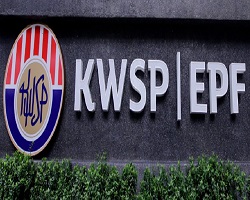JULY 12 — Change is never easy, especially when it comes to societal forces shaping policy paradigms and processes. Let’s take the recent public discourse on EPF for example. If it is familiar to you then you have heard of such conversations before.
It usually begins with a spoken idea. It may or may not have been the result of some analytical write-up, but that hardly matters to the undiscerning public. The media, print or electronic, does not have the time nor space to properly elucidate the considerations involved. As such, the masses digest said soundbite to quickly form an opinion using their imagination to fill in the blanks.
I use the word imagination charitably. Usually our prejudice, misinformation and assumptions go along together with it.
Before we talk about social protection reforms, we have to get the public on the same page on a few fundamental matters. Money doesn’t grow on trees, and public funds come from taxpayers, be it individuals or businesses.
When we talk about KWAP, EPF, LTAT, Socso or any social security institutions, we must be clear about its legal duties and responsibilities. For example, the Employees Provident Fund Act 1991 clearly stated that Act 452 is to “... provide for the law relating to a scheme of savings for employees retirement and the management of the savings for the retirement purposes and for matters incidental thereto”.
In simple words, the raison d’etre of EPF is managing a mandatory savings scheme for retirement — not for other purposes be it housing, health or education. Why collect contributions only to give them out again? Are housewives ‘employees’? What is EPF’s guidance on ‘retirement purposes’ when it is working so hard to enrich the already wealthy?
Before 1971, there used to be a ceiling for EPF contributions (see Employees Provident Fund Ordinance 1951). Originally, it covered only employees who earned less than RM400 per month and the contribution rates were 5 per cent each by the employer and employee. There used to be a number of retirement savings schemes too back then, because the Ordinance allowed existing schemes or new ones to be established (this is still the case for Thailand, a country with many private provident funds). LTAT is still around, but the Teachers Provident Fund (KWSG) has since been abolished (see Yayasan Guru Tun Hussein Onn).
In 1977, EPF members were allowed to withdraw some of their savings to purchase low-cost housing. This expanded and grew to become the current partial withdrawal for housing from Account 2. In 1995, EPF introduced an Account 3 fund for treatment of critical illnesses. Today, you can also empty the same Account 2 again and again to cover healthcare costs for a range of illnesses, including cancer. Withdrawals for member’s children education was introduced in 2000 and for member’s own education in 2001. Today, we all act surprised that members’ retirement savings are low and insufficient. This is clearly a leaky bucket phenomenon and those who say otherwise are in denial. Who has truly benefited from these early, partial withdrawals? Anyone has a memory long enough on the housing bubble, and it is not a surprise why the national health insurance is not really taking off despite being mooted more than two decades ago?
Now let’s turn to a different pension fund for a moment. Before the Retirement Fund Act 2007 (Act 662), the Federal Government enacted the Pensions Trust Fund Act 1991 (Act 454) to manage its future pension liability. Of course, till this day, the civil service pension is still being charged to the Consolidated Fund (Article 97 of the Federal Constitution), but the government has been paying a percentage of their annual emolument (read: salary) budget to the Retirement Fund (Incorporated), or commonly known to us as KWAP. The Federal Government contributes 5 per cent for their employees, while Statutory Bodies, Local Authorities and Agencies contribute 17.5 per cent of their pensionable employees’ basic salaries on a monthly basis. Does this sound familiar to EPF? Of course, the Federal Government doesn’t seem to be fulfilling its role as an employer very well by contributing 12.5 per cent less than, say, the Statutory Bodies, but that is not the main reason for this factoid here.
What I want the readers to ask themselves is, does any of the money in KWAP now (about RM160 billion in 2023) belong to the individual civil servants, including me personally?
Other than understanding differences between funded versus pay-as-you-go (PAYG) pension models, and the differences in defined contribution versus defined benefit systems, the public must be able to understand the differences between individual accounts versus notional accounts. Without going too far into jargon babbling, suffice for the lay audience to understand that without laws like the EPF Act 1991 or Retirement Fund Act 2007, nobody, whether employers or employees can be compelled to do anything. So before you go screaming that the EPF pile of gold belongs to you, remember the Government that is enforcing the law and the employers who are paying their share to make this provident fund happen.
So, with the fundamental problem of arguing whose money is it anyway somewhat resolved, the EPF IS a mandatory RETIREMENT savings fund. With increasing longevity, or not, we can see how a lump-sum withdrawal at age 50, 55 or even 60 is not serving the best interest of all stakeholders involved. It is ironic that the ones who have excess funds running into millions do not typically withdraw all their savings prematurely to take advantage of the guaranteed dividend returns, tax-free. It is always the low- and middle-income group that is waiting for the day and counting the hours till they can lay their hands on the nest egg only to blow it away within a short period of time. Although a bit dated, a study by Universiti Malaya in 2003 with 2,427 former contributors found that 14 per cent of them used up their retirement savings in 3 years, 50 per cent of them ran out in 5 years and 70 per cent of them depleted their savings in 10 years. Of course, we can quibble about definitions, sampling, methods and where the monies actually ended up (after all, paying off a housing loan isn’t that bad), but the data doesn’t seem to suggest EPF working very well in terms of income security in old age.
The deliberation and action before us is to think of solutions so that retirees will be protected against poverty in later life and ONE of the solutions is to annuitise or draw down some (not all) of the EPF retirement savings on a monthly basis. Other actions are needed too, like aligning withdrawal and retirement ages, addressing persistent lifetime low-income earners, bridging the gaps in coverage for informal sector workers and incentivising old-age employment or work. There is no single silver bullet. Annuitising the payouts, or putting in place a monthly drawdown also doesn’t tackle longevity shortfalls. Our discussion should not centre on merely setting aside an amount for pension-like disbursement, but also convincing the government that we need public funds or pooled resources to cover EPF members when their savings are depleted. The government does not spend a single tax dollar on EPF, it is high time to rethink that approach. The answer is not always about creating a new social pension by giving everyone peanuts. There is still a lot of room for us to tweak what we already have and turn it into a pension system for all, eventually.
If we cannot get the message across to the masses, we will be stuck with false dichotomies and archaic solutions that the West themselves are trying to get away from. Ultimately, any pension fund is about taking money away from those who are earning a wage to be given to those who are not. If we design it correctly (and efficiently), we can set aside 20 per cent of earnings from our working population to provide a pension not just for the workers themselves when they are old, but also provide people who did not work or have stopped work with a basic pension from the SAME fund. We need to look at funded pension models, plug the leakages, and do the maths. And for God’s sake, put a contribution ceiling in place (Singapore’s is S$6,000 (RM20,847) per month or S$102,000 per annum) so that EPF works for everyone’s basic retirement needs, not to enrich those who are already affluent and can take care of themselves with the numerous financial instruments out there (stocks, bonds, PRS, PNB etc).
The worst thing we can do right now is to pivot and end public discussions on the matter. Let the experts and public alike weigh in on potential designs, alternatives and examples from different countries, the conditions we need to fulfil before proper reforms to the social protection system can take place and the concerns and pitfalls to look out for. If we again backtrack, backpedal and sweep it out of public consciousness, who knows when the opportunity might come knocking again to do something about a problem many of us have known for decades!
This article was written by Mr. Chai Sen Tyng
 |
|
Chai Sen Tyng
Senior Research Officer
Tel: +603 - 9769 2740
Faks: +603 - 9769 2744
E-mail: chai@upm.edu.my
|
This article was published by Malaymail on 12nd July 2023
Tarikh Input: 13/07/2023 | Kemaskini: 13/07/2023 | lizamdnor
PERKONGSIAN MEDIA




























